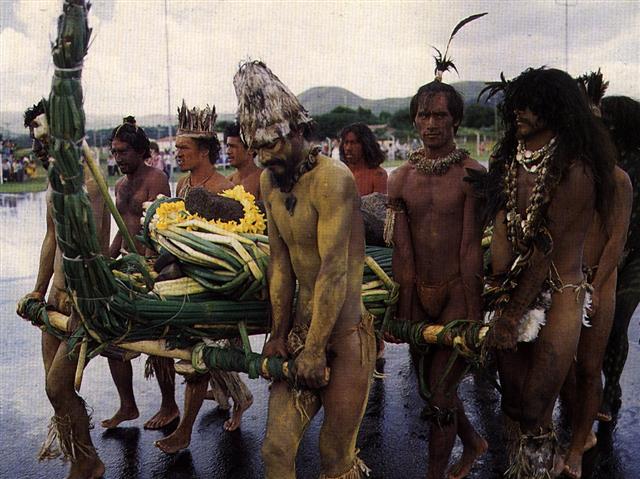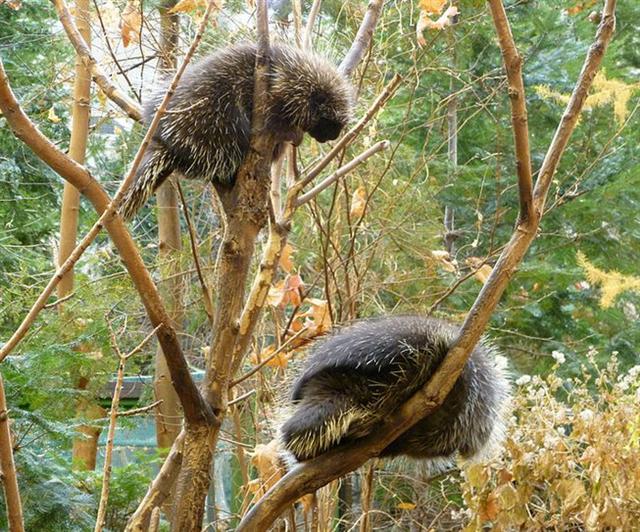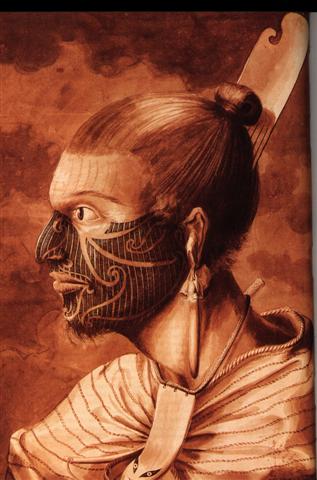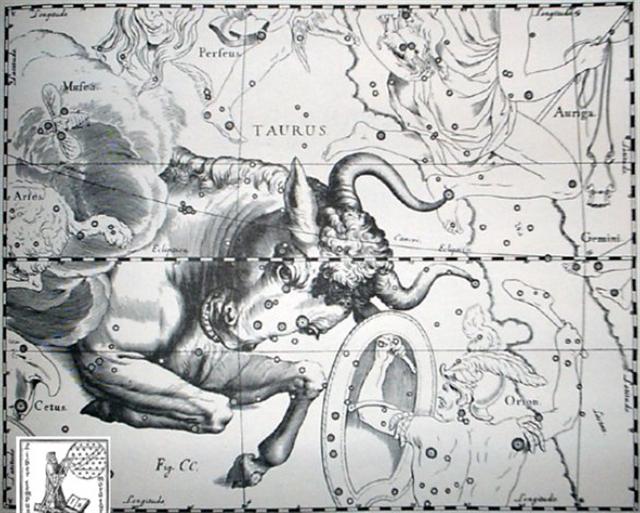To repeat, I think there were 65 (= 365 - 300) right ascension days (variants of plants) ending at heliacal Aldebaran (the star pillar at the rear):
In the uhi list there were holes for Adhil and Mira, presumably in order to make the reader think and to deduce that the items brought onboard the Royal Double Canoe were enumerated in parallel with the days counted from 0h - i.e. from the stone statue Te Takapau which was the first item to be brought onboard the ship. Once the clues for such a conclusion had been securely planted in the pages there should, one might guess, be no reason to jump over any more of the ordinal numbers in the lists. ... Teke said to Oti, 'When you see [ana ui mai koe] that Maeha is coming out of the house and is walking [oho ki vaenga] over to the yam plantation, then two [hokorua, 2] of you shall look around, enter [uru] into the house, and take [too] the stone figure (moai maea) that is lying there. (Her) name is Te Takapau.' After Maeha and Teke had reached the middle [ki vaenga] of the yam plantation, Oti and Parahenga [Bara henga] went into the house [ki roto ki te hare], picked up [he too mai] the figure, put her on a stretcher (rango) and carried her on board the canoe. (There) they left her ... [E:61]
The middle (vaenga) of the uhi plantation was at Adhil (ξ Andromedae). For *39 / 2 = *19½ corresponded to April 9 (99 = 464) respectively to "February 27 (2-27 → π, *343 = 7 * 7 * 7). And at the time of the Bull this place had been day 400 (FEBRUARY 4, *320 → the South Pole star Dramasa). Adhil (Garment's Train) was between the legs of Andromeda:
Va'e: Foot, leg; te va'e mata'u, te va'e maúi, right foot, left foot. Va'e ruga, va'e raro, quick and light, without detour (lit.: foot up, foot down). Ka-oho koe ki a nua era va'e ruga va'e raro, ina ekó hipa-hipa, hurry straight to your mother, do not make any detours. Va'e pau, misshapen foot, clubfoot. Vae, to choose. Vaega, middle, centre; i vaega o, in the middle of. Vanaga. 1. Foot, paw, leg, limb; vae no roto, drawers; karikari vae, ankle. P Pau.: vaevae, foot, leg. Mgv.: vaevae, id. Mq.: vae, id. Ta.: vaevae, avae, id. 2. Pupil. 3. To choose, elect, prefer, promote, vote; vavae, to destine, to choose; vaea (vae 2), pupil. Vaeahatu (vae 1 - ahatu): moe vaeahatu, to sleep sprawling with legs extended. Vaega, center, middle, within, half; o vaega, younger; ki vaega, among, between, intermediate. P Pau.: vaega, the middle. Mgv.: vaega, center, middle. Mq.: vaena, vavena, vaveha, id. Ta.: vaehaa, half. Vaehakaroa (vae 1 - roa): moe vaehakaroa, to sleep with legs stretched out. Vaehau (vae 1 - hau 3), pantaloons, trousers. Vaeherehere (vae 1 - here 1), to attach by the paw. Vaerere (vae 1 - rere 1), to run. Churchill. Ta.: 1. Timbers of a boat. Ha.: wae, knees, side timbers of a boat. 2. To share out. Sa.: vae, to divide, to share. Ma.: wawae, to divide. Churchill. Similarly, I think, the structure 22 + 6 was embedded in the Manuscript by doubling the last variant of kumara and conspiciously omitting the first variant of maika. We should then arrive at the beginning of a new equinoctial year. Immediately, however, we will encounter another complication, because Aldebaran rose with the Sun 2 days too early ... 'When you see [ana ui mai koe] that Maeha is coming out of the house and is walking [oho ki vaenga] over to the yam plantation, then two [hokorua, 2] of you shall look around, enter [uru] into the house, and take [too] the stone figure (moai maea) that is lying there. (Her) name is Te Takapau.'
compared to *70 (the epoch at the beginning of the Mayan text at Koba):
The taro list (which followed after the banana list) might therefore have a pair of special items at its beginning. This we can indeed see because ngeti uri and ngeti tea were not given the article he:
Possibly these 12 items were alluding to the months of the year. However, basically they ought to continue the enumerating of right ascension days at the time of rongorongo. There must be a global order.
... the Hawaiian staple, taro, is the older brother of mankind, as indeed all useful plants and animals are immanent forms of the divine ancestors - so many kino lau or 'myriad bodies' of the gods. Moreover, to make root crops accessible to man by cooking is precisely to destroy what is divine in them: their autonomous power, in the raw state, to reproduce ... The older brother of mankind had ruled earlier than Aldebaran when the precession had pushed him ahead with 2 days in the Sun calendar.
|
||||||||||||||||||||||||||||||||||||||||||||||||||||||||||||||||||||||||||||||||||||||||||||||||||||||||||||||||||||||||||||||||||||||||||||||||||||||||||||||||||||||||||||||||||||||||||











